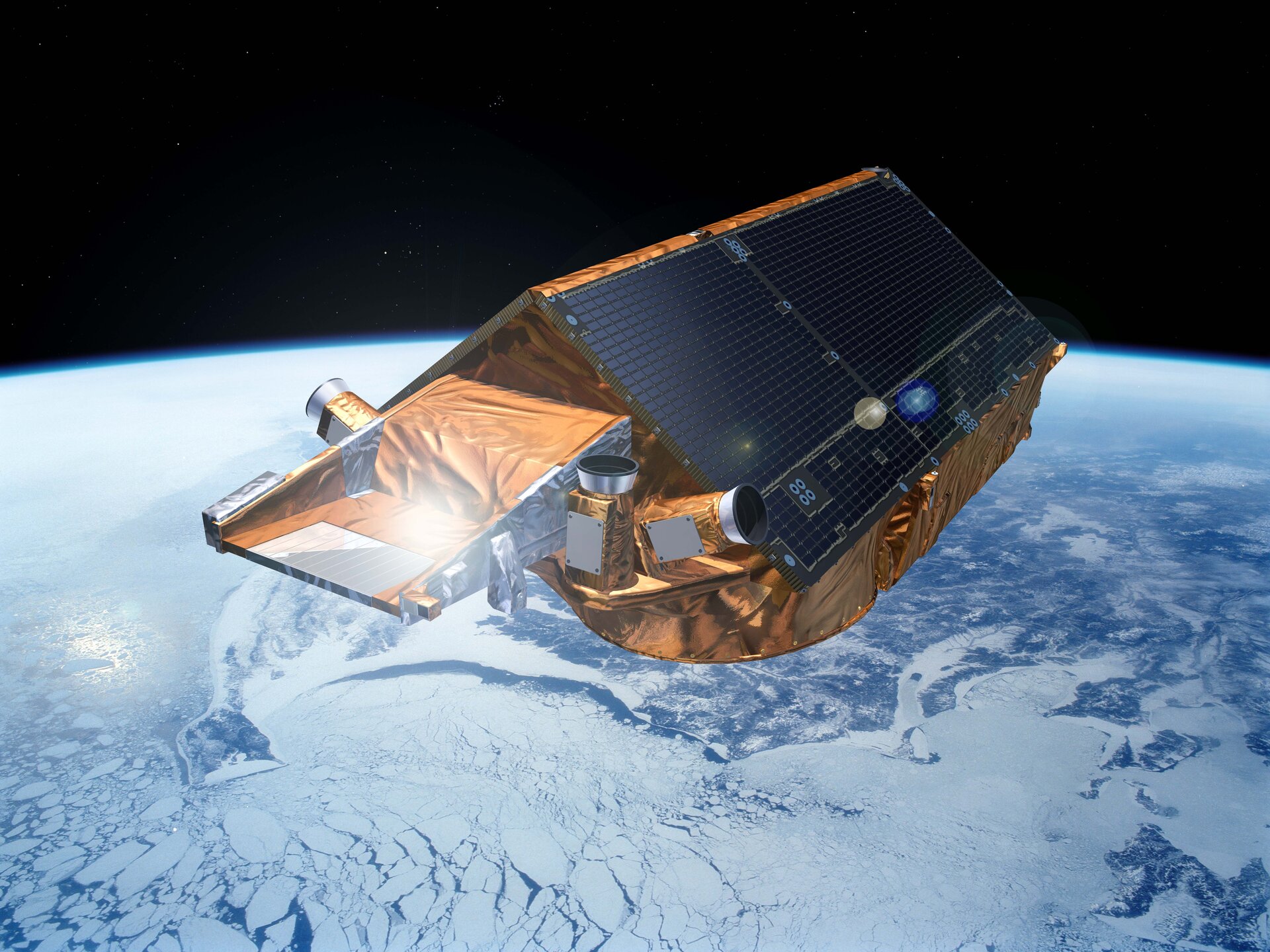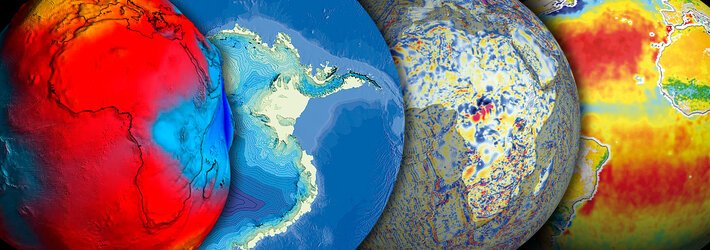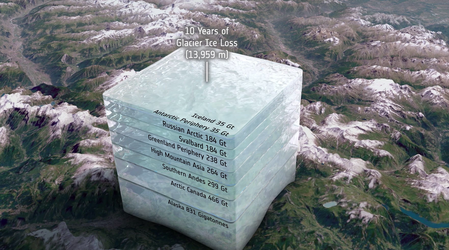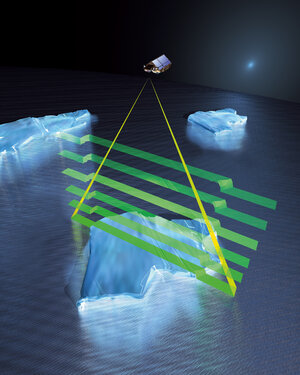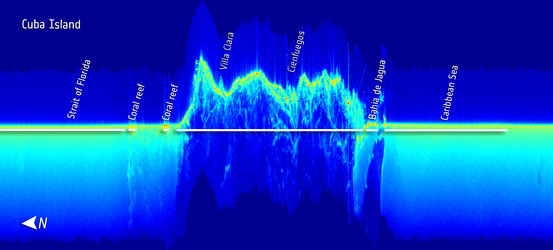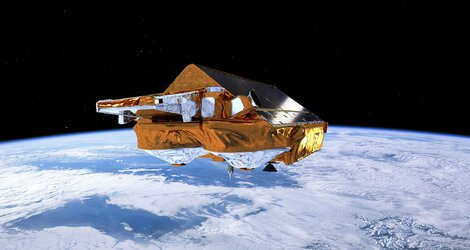Life beyond the leak for ESA’s CryoSat
On 21 November 2023, ESA’s CryoSat satellite swapped to its back-up propulsion system after a fuel leak threatened to bring the mission to an end in 2025.
The swap has the potential to extend the life of the satellite by as much as 5 to 10 years. But the back-up thrusters had never been used before.
If something had damaged them during CryoSat’s 13 years in orbit, there was a small chance that the mission would come to an immediate end after the switch.
What is CryoSat?
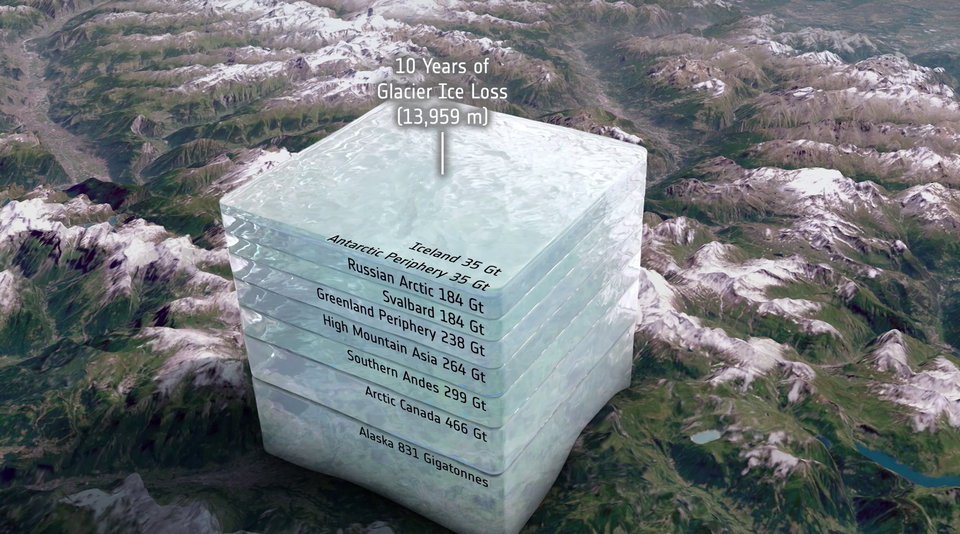
CryoSat is ESA’s satellite dedicated to measuring the thickness of polar sea ice and monitoring changes in the ice sheets that blanket Greenland and Antarctica.
The mission was designed to last roughly 5 years. It has now spent over 13 years in orbit.
“Since 2010, CryoSat has used its Synthetic Radar Altimeter (SAR) to monitor land and sea ice everywhere on Earth to help scientists demonstrate the important role ice plays in regulating climate and being affected by global warming,” says Tommaso Parrinello, CryoSat Mission Manager.
"CryoSat is a gift that keeps on giving. Its thirteen-year climate record of global ice and sea levels is unparalleled, and long may it continue."
Recent mission highlights include the first ever year-round map of Arctic Sea ice and our most accurate estimates yet for the ice volume lost by Earth’s glaciers and polar ice sheets. These data are critical to inform climate reports and policy makers.
CryoSat's data are also shaping the design of new ice-monitoring satellites, such as the Copernicus Polar Ice and Snow Topography Altimeter (CRISTAL) mission.
What was the problem with CryoSat?
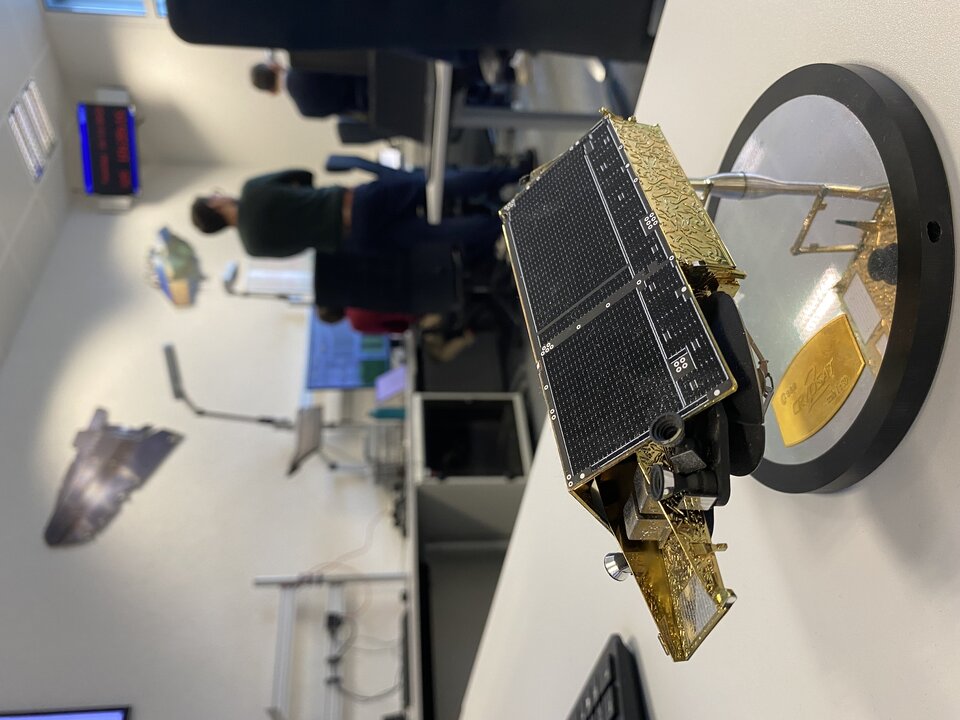
In order to make ultra-precise measurements of Earth or the cosmos, most satellites conduct regular manoeuvres to keep them in the perfect orbit.
CryoSat uses compressed nitrogen to manoeuvre in space. The gas is stored at high pressure in a fuel tank and carried through a series of pipes and valves to thrusters. The thrusters release the gas out into space, pushing or turning the satellite in any commanded direction.
Fuel consumption was not expected to be a limiting factor for CryoSat. But in 2016, the operators flying CryoSat at ESA’s European Space Operations Centre (ESOC) in Darmstadt, Germany, noticed that the spacecraft was using up its 37 kilograms of compressed nitrogen much faster than expected.
As of November 2023, CryoSat has 13 kg of fuel left – 13 kg less fuel left than it should have based on the use of the thrusters for orbit maintenance manoeuvres and attitude control.
When the fuel tank drops below 5 kg, the satellite will no longer be able to reliably control the direction it points or maintain its orbit.
What caused the leak?
CryoSat’s nitrogen propellant is stored in a fuel tank at high pressure. A pressure regulator converts the high-pressure air into much lower pressure for use by the thrusters.
Together with the experts at the satellite’s manufacturer, Airbus, the ESA team has pinpointed the location of the leak to one of CryoSat’s smaller attitude thrusters.
At first, the leak rate was small, but it increased over the first few years and has reached a stable rate that would still bring the CryoSat mission to the end in 2025.
One explanation for this could be that a small crack appeared somewhere and grew to a certain size before stopping. But it is difficult to diagnose this kind of problem from the ground, and it’s impossible to know for sure.
How did you save the satellite?
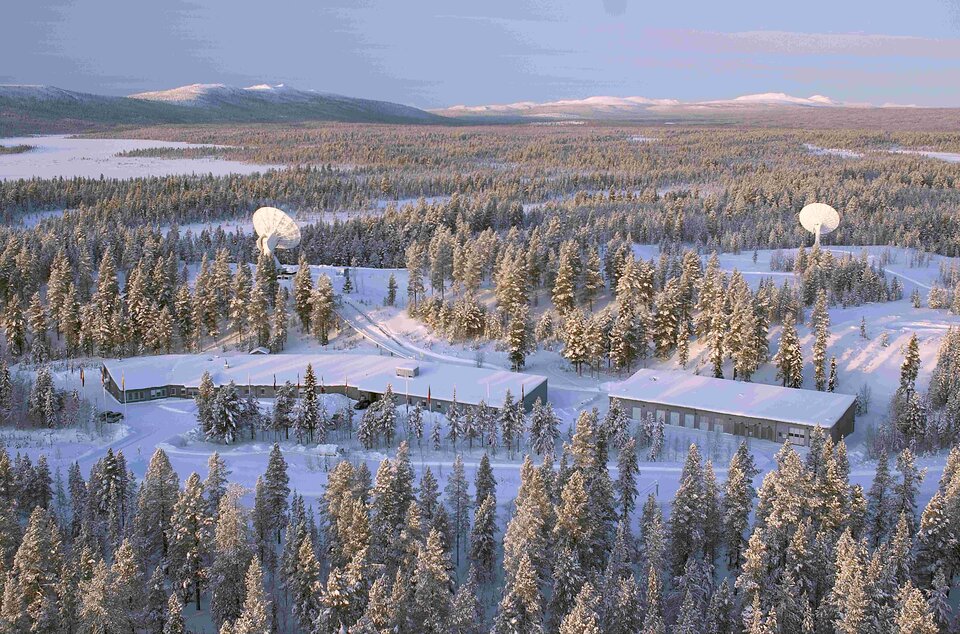
CryoSat has a secondary, back-up propulsion system connected to its fuel tank.
On 21 November, at 10:45 CET, operators at ESOC initiated the swap to this back-up system, as CryoSat passed over Svalbard station on Spitzbergen Island and ESA’s Kiruna station in Sweden.
First, leaving the primary thrusters connected, they opened the main valve to the back-up propulsion system for the first time in CryoSat’s 13 years in space.
At ESOC in Germany, CryoSat’s spacecraft operations engineers and the team from Airbus monitored screens as the pressure rose – both inside the back-up propulsion system on CryoSat and in the control room on Earth.
The pressure in the back-up system stabilised – indicating that it was not suffering from any major issues of its own – and the satellite’s onboard computer was instructed to use the back-up thrusters instead of the primary thrusters that it has used since launch.
And then… silence.
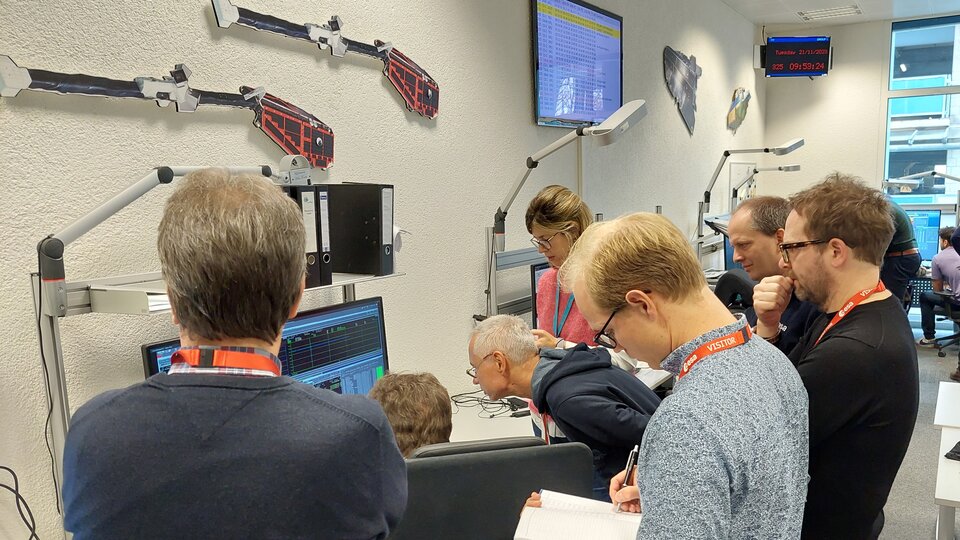
CryoSat was left alone as it flew southbound over Africa, connected to and using its back-up thrusters for the first time.
“CryoSat’s backup system is robust and was likely to work as intended,” says CryoSat Spacecraft Operations Manager, Jens Lerch. “And if there was a problem with it, during the switch or at any point in the future, the satellite is capable of swapping back to its primary system autonomously.”
“But we couldn’t know for sure. The back-up hasn’t been needed during the 13 years that CryoSat has been in space. During this time, it could have suffered a similar leak or been damaged by something like a micrometeoroid – and we had no way to test it previously without exposing us to the same risks we faced today.”
Thankfully, 25 minutes later, CryoSat rose above the horizon of the Troll ground station in Antarctica fully functional.
With the proper functioning of the back-up attitude control thrusters confirmed, the main valve to the primary thrusters was closed to stop the flow of gas through the leak.
The next day, 22 November, the flight control team at ESA conducted an ‘orbital control manoeuvre’ to test the two larger thrusters in the back-up system.
As no issues were found during or after the manoeuvre, CryoSat’s back-up thrusters are now officially commissioned, and the satellite is capable of continuing scientific activities to the end of the decade and possibly beyond.
Hold on, the leak was detected in 2016. Why wait until now to do something?
At any time since launch, CryoSat has had the ability to swap to its back-up propulsion system if its onboard computer detected a sudden major issue with the primary system.
But reacting to a slow leak represents a more difficult decision than reacting to a fast leak that must be handled immediately or even autonomously by the satellite.
CryoSat has gathered seven years of invaluable ice mapping data between 2016 and 2023. If operators had switched to the back-up thrusters immediately, and a series of very unlikely problems had occurred during the reconfiguration, these data would never have existed.
But the longer they waited, the more fuel leaked out into space, and the fewer additional years they could gain by making the swap.
21 November 2023 was selected as the day that balanced these two factors.
What next?
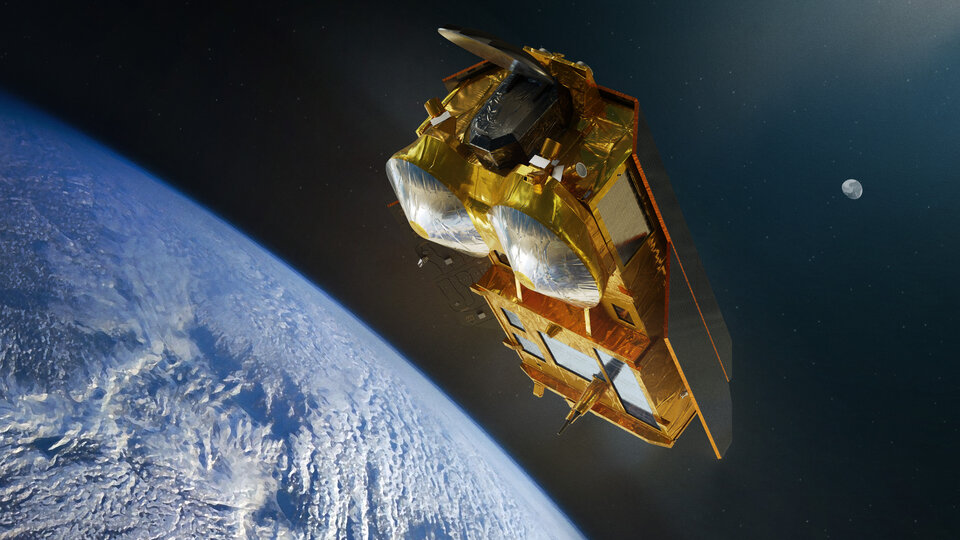
The swap to CryoSat’s back-up thrusters was a success. But we don’t yet know exactly how much this could extend the mission.
Only by monitoring the fuel reserves over the next few days and weeks will the CryoSat team know if there are any smaller leaks or issues in the back-up system.
In the best case, this operation could prove invaluable for humankind’s polar ice records.
CryoSat has been a key part of what some have called the “golden age of satellite altimetry”. Amongst an impressive fleet, its radar altimeter is unique in being able to monitor ice and water levels in every part of the globe.
CRISTAL, CryoSat's natural successor, is not due to launch for another few years. The extension of CryoSat’s observations would bridge the gap and maintain the longest unbroken record of changing global ice we've ever had.
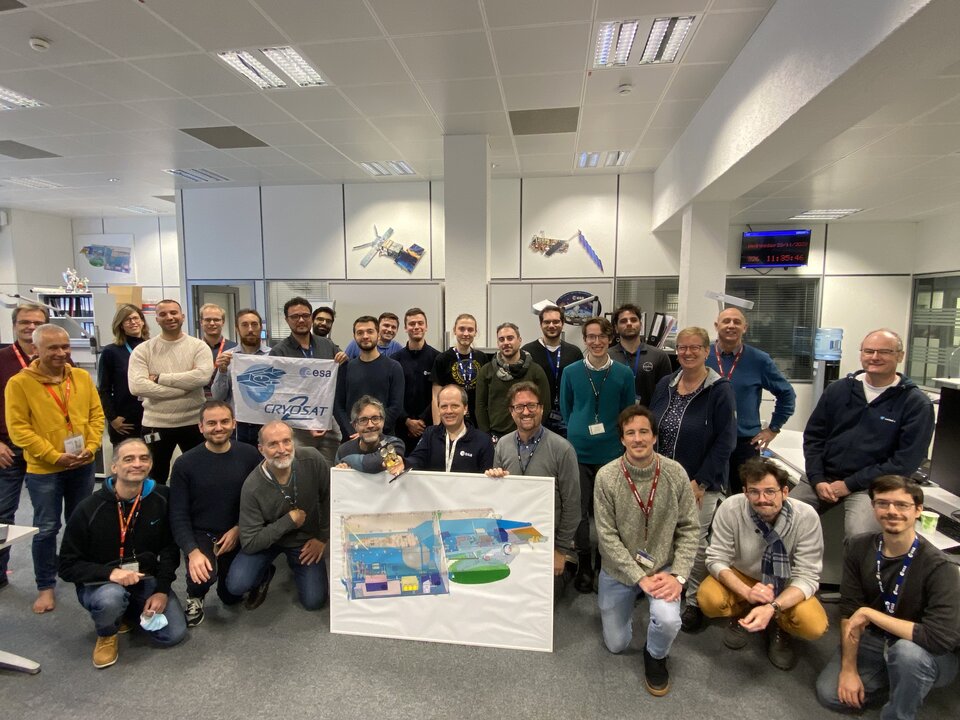
Meanwhile, a novel collaboration with NASA's ice monitoring satellite ICESat-2, which combines the orbits of ICESat-2 and CryoSat to map snow on ice – a significant cause of uncertainty in our estimates – could improve the accuracy of satellite measurements of ice volume yet further.
The findings will be directly applicable also to future ice missions, including CRISTAL.
With consistent improvements to CryoSat's data products, which cover not just sea ice and land ice but polar oceans, coastal oceans and inland waters, ESA's ice mission still has plenty to offer.


